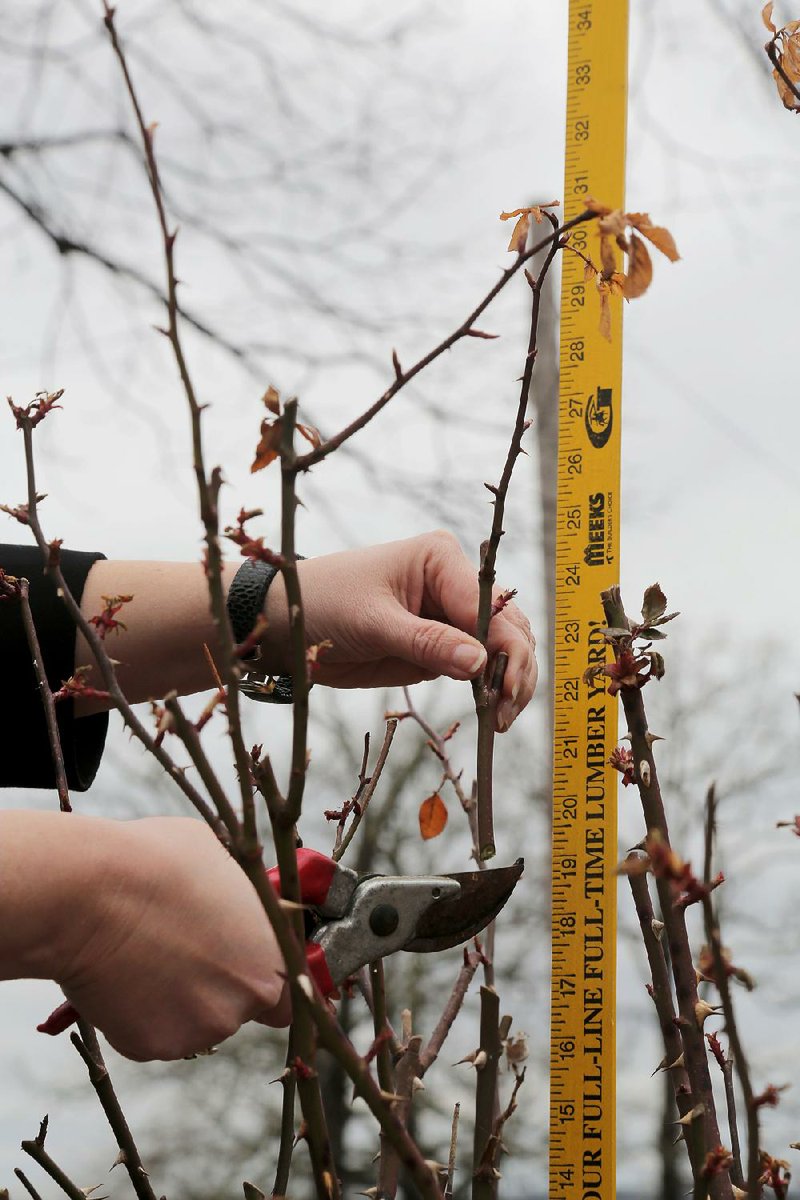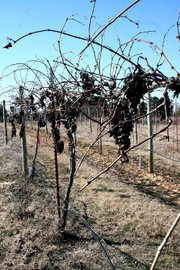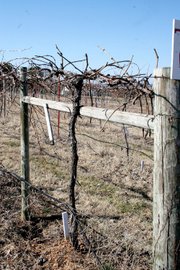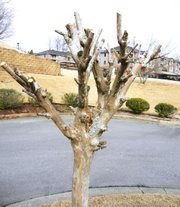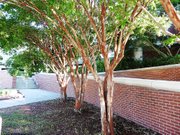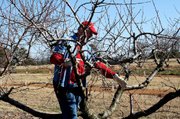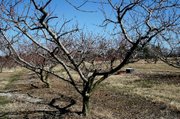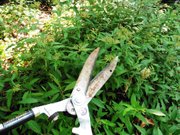Most gardeners know that mid- to late February is the pruning season for fruit trees and many summer-flowering and evergreen shrubs, including roses and blueberries. But this year, the weather has not been too conducive to yard work.
If you did not get needed pruning done, don't despair. You are not too late.
The weather set back our work but has also slowed the arrival of new foliage, so we have plenty of time to prune. The key is to get your pruning done before plants are in full leaf. Pruning later won't hurt the plant, but it can delay the first blooms.
There are three basic questions you need to be able to answer before grabbing the pruning shears.
• Why are you pruning?
• When do your plants need pruning?
• How should you prune?
If you can answer them all correctly, then go forth and prune.
WHY?
Your plant had damage, has grown too large, you need to improve flowering and/or fruiting, or you want a specific shape or size.
WHEN?
If your plant blooms in the spring, don't touch it now or you will be removing flower buds that are waiting to open.
If your plant blooms in the summer or fall, now is the perfect time to prune. Summer-blooming plants -- including roses, Rose of Sharon (althea), butterfly bush (buddleia), clethra and crape myrtles -- set their flower buds on new growth, so pruning now will not hinder blooming, and in some cases will improve flowering.
Plants grown primarily for their evergreen foliage, like hollies, boxwoods, cleyera and elaeagnus, can be lightly shaped or sheared in any season. But if you plan to remove more than one-third of the plant, then now through early spring is the best time to prune, to allow for quick recovery.
There are a few plants that don't follow the rules. Big-leaf garden hydrangeas, oakleaf
hydrangeas and gardenias bloom in the summer, but set flower buds in the fall, so they have a very narrow window of opportunity -- immediately after bloom -- when you can prune without interfering with flowering. (Let's hope Mother Nature has not damaged hydrangeas and gardenias this year; that happened last year, resulting in no flowers last summer.)
HOW?
Plants grow in different ways. Some have a dominant trunk, like a holly or azalea. Most of the branches generate from the main framework of the shrub, and selective removal of branches gives you a fuller and more floriferous plant.
If you have a cane-producing plant -- one that does not have a dominant trunk, but many trunks or canes, like nandina, hydrangeas, spirea and forsythia -- then rejuvenation, or thinning, is the best way to prune: Remove older and woodier stalks right at the soil line.
Small-leafed plants like abelia and spring-blooming spirea also can be sheared lightly to shape older branches.
NEEDY AND NOT NEEDY
Now you know how to ask and answer the questions.
Remember that not all plants should be pruned every year. In many cases, if you have chosen the right plant for the right spot, you may never have to prune. But some plants need annual pruning.
If you grow roses, fruit trees, grapevines, blueberries, ornamental grasses, butterfly bush or summer-blooming spirea, they must be pruned every year.
Crape myrtles, althea, vitex, clethra and summer-blooming panicle hydrangeas and smooth hydrangeas (Hydrangea paniculata and Hydrangea arborescens) may or may not need to be pruned, depending on the plant and what you want from it.
Let's look at individual cases.
• Roses: Hybrid tea roses have the most specific requirements. They need to be pruned hard, 8 to 18 inches from the ground, to an outward-facing bud to keep the center of the rosebush and the resulting branches open.
This allows for better air flow and light penetration.
Shrub roses such as Knock-outs and Drift just need a good haircut -- cut them back by half or more.
Climbing roses need to be pruned as well, but after they bloom in the spring.
• Grasses: All ornamental grasses need to be cut as close to the soil line as possible.
Pull back all the dead foliage and see how tall the new, green sprouts are. You don't want to slice the tips off your new growth and create brown edges, so prune accordingly. Taking off the old makes way for new foliage.
While this is needed on true grasses, since all the old foliage is officially dead anyway, plants that we grow as grass such as monkey grass (liriope) and mondo grass often need a little sprucing up before new growth begins.
• Shrubs: Summer-blooming spirea and butterfly bush (buddleia) should be pruned hard. Unless you are growing one of the taller buddleias, they can be pruned almost to the ground line before new growth begins. They bloom on the new growth, and the more new wood we have, the better they bloom.
During the growing season, deadheading (removing the spent blooms) will encourage more flowers.
m Fruit trees: Fruiting trees and bushes need annual pruning as well. We prune to keep the plants at a manageable height and increase fruit set.
Most fruit trees set so many buds that if all were allowed to bear, the results would be a bunch of small, poor quality fruits.
There is a bit of an art to pruning fruit trees. Generally, apples and pears are pruned into almost a Christmas tree shape: a taller, central leader with wider lower branches. Thinning cuts are also important, to remove crossover branches and branches growing directly on top of other branches.
Peaches and plums normally need a more open pruning, more like an upside-down umbrella. This allows for better air flow and fewer problems with disease. (I think peaches and plums are best left to the commercial producer, since an intense spray program is required here for quality fruits.)
Grapevines and muscadines must be pruned annually for best production. They are rampant growers. If not pruned, table grapes will ripen one grape at a time instead of in clusters, and the quality will be poor. Methods for training the vines vary by variety and also by the age of the plant.
Guidelines for pruning fruits can be found on the University of Arkansas Division of Agriculture's Cooperative Extension Service website. Search uaex.edu for "FSA-6042" for fruit trees and "FSA-6108" for grapes.
LET IT GROW
Crape myrtles are probably the most overpruned plants on the planet, suffering from "crape murder" on an annual basis.
If you have a dwarf or groundcover form, prune to your heart's content, because they are similar to the butterfly bush in that they remain small and bloom on new growth.
But if you have a standard crape myrtle, let it become the graceful, beautiful tree it was meant to be. Choose three to five main trunks, let the branching begin 6 feet off the ground, then let it grow.
While improper pruning rarely kills a broadleaf plant, the results are sometimes enough to kill the plant by embarrassment. So instead of grabbing the pruning shears and hacking away, take time to understand how the plant grows and what is needed. The results will be pretty impressive. As always, if you have questions, contact your local Extension office.
Janet B. Carson is a horticulture specialist for the University of Arkansas Cooperative Extension Service.
HomeStyle on 03/14/2015
